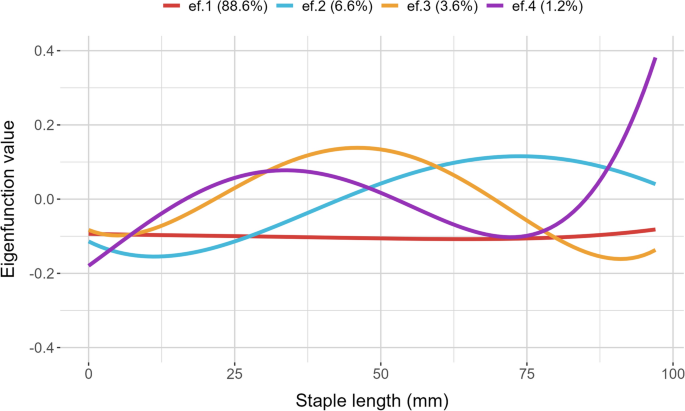Top-Rated Optical Fibre Diameter Analyser for Heavy-Duty Use
Unlock Accuracy: The Ultimate Overview to Optical Fiber Diameter Analyser Equipment
Accurate dimension of optical fibre diameter is important for boosting the performance and reliability of fiber optic systems. As we check out these tools, it becomes apparent that the future of optical fibre analysis is developing swiftly, increasing inquiries about how these developments will certainly affect the sector.
Value of Optical Fibre Measurement
Accurately determining optical fiber diameter is essential in ensuring ideal performance and integrity in communication systems. The size of optical fibers directly influences their light transmission capabilities, impacting transmission capacity, attenuation, and total signal stability. A specific measurement is vital to maintain the preferred requirements for numerous applications, including telecommunications, information transmission, and sensing innovations.
Incorrect or inconsistent fibre sizes can result in enhanced losses and minimized efficiency, eventually endangering the efficiency of the whole communication network. Additionally, variations in size can create troubles in splicing and attaching fibres, resulting in higher operational expenses and prospective system failings. Therefore, executing extensive dimension procedures is essential.

Kinds Of Diameter Analyser Tools
To achieve reliable optical fibre measurements, numerous diameter analyser devices are utilized, each developed to provide to details measurement needs and applications (optical fibre diameter analyser). These devices can be broadly categorized right into three primary types: manual, semi-automated, and fully automated analyzers
Manual diameter analyzers are typically used in smaller operations or labs where accuracy is needed yet production volume is reduced. They provide drivers straight control over the measurement process, enabling mindful changes and confirmations.
Semi-automated size analyzers improve performance by integrating manual input with automated attributes. These devices commonly include easy to use interfaces that streamline the measurement procedure while still enabling operator oversight.
Completely automated size analyzers represent the peak of measurement technology. These advanced systems incorporate innovative sensors and software application to give real-time measurements with marginal user intervention. They are excellent for high-volume manufacturing atmospheres, ensuring constant precision and quick data collection.
Each type of size analyser offers unique functional requirements, making it vital for customers to meticulously review their particular requirements when choosing the ideal tool for optical fibre dimension.
Secret Functions to Take Into Consideration
When choosing an optical fibre diameter analyser, a number of essential functions require mindful factor to consider to make sure optimal efficiency and reliability. Initially, dimension precision is paramount; try to find tools that provide high-resolution readings, preferably in micrometers, to make certain accuracy in diameter evaluation. Furthermore, the rate of dimension is critical, specifically in manufacturing environments where effectiveness is crucial.
An additional vital feature is the calibration process, as a trustworthy analyser needs to give uncomplicated calibration treatments to maintain dimension honesty with time. The variety of sizes the device can gauge read what he said is additionally substantial; make sure that it accommodates the certain fibre kinds appropriate to your applications.
Transportability might be a consideration, specifically for fieldwork; lightweight and portable layouts boost use in numerous setups. Straightforward interfaces and software application compatibility can help with smoother procedure and data analysis.
Finally, take into consideration the assistance and warranty provided by the maker; trustworthy client service and detailed guarantee choices can safeguard your financial investment and ensure lasting satisfaction. By concentrating on these attributes, you can choose an optical fiber diameter analyser that satisfies review your particular needs and boosts your functional capacities.
Best Practices for Usage
Effective use of optical fibre diameter analysers pivots on a thorough understanding of best practices that enhance measurement dependability and precision. Ensure that the analyser is calibrated appropriately before each usage. Calibration versus known criteria minimizes potential errors and develops a baseline for succeeding dimensions.
2nd, preserve a tidy setting. Dust, moisture, or contaminants on the fiber or the analyser's lenses can alter results. Frequently evaluate and clean up both the tools and the fiber to keep ideal efficiency.

In addition, conduct measurements at regular temperatures and humidity levels, as ecological factors can impact outcomes. File each dimension diligently, noting problems and any type of abnormalities experienced throughout the process.
Future Trends in Optical Fiber Analysis
As the need for high-performance optical navigate to this website fibres continues to climb, advancements in analysis strategies are established to change the industry (optical fibre diameter analyser). Future patterns in optical fiber evaluation will likely be driven by raised automation and the assimilation of artificial knowledge (AI) and equipment learning (ML) innovations. These technologies guarantee to improve data accuracy, reduce evaluation time, and enable real-time tracking of fibre quality
Furthermore, the advancement of portable and straightforward analysis tools will facilitate on-site analyses, enabling better flexibility and effectiveness in manufacturing environments. Boosted imaging technologies, such as high-resolution imaging and spectral evaluation, are anticipated to give much deeper understandings right into fibre qualities, enabling makers to optimize their processes even more.
Additionally, as markets increasingly accept sustainability, there will be a promote green materials and techniques in optical fiber production. This shift will necessitate new analytical strategies to examine the efficiency and durability of these materials under varying conditions.
Conclusion
Exact measurement of optical fiber diameter is essential for enhancing performance and ensuring integrity in interaction systems. Continued development will even more boost the accuracy and efficiency of optical fiber evaluation.
Exact measurement of optical fiber size is important for enhancing the efficiency and reliability of fiber optic systems. In a progressively linked globe, where high-speed data transmission is vital, the duty of exact optical fiber size measurement can not be overemphasized, as it serves as the structure for durable interaction infrastructure.When selecting an optical fiber size analyser, several essential features call for careful consideration to guarantee ideal efficiency and reliability.Effective use of optical fiber size analysers pivots on a comprehensive understanding of ideal practices that enhance dimension dependability and accuracy.Precise measurement of optical fibre diameter is vital for optimizing performance and making certain reliability in interaction systems.